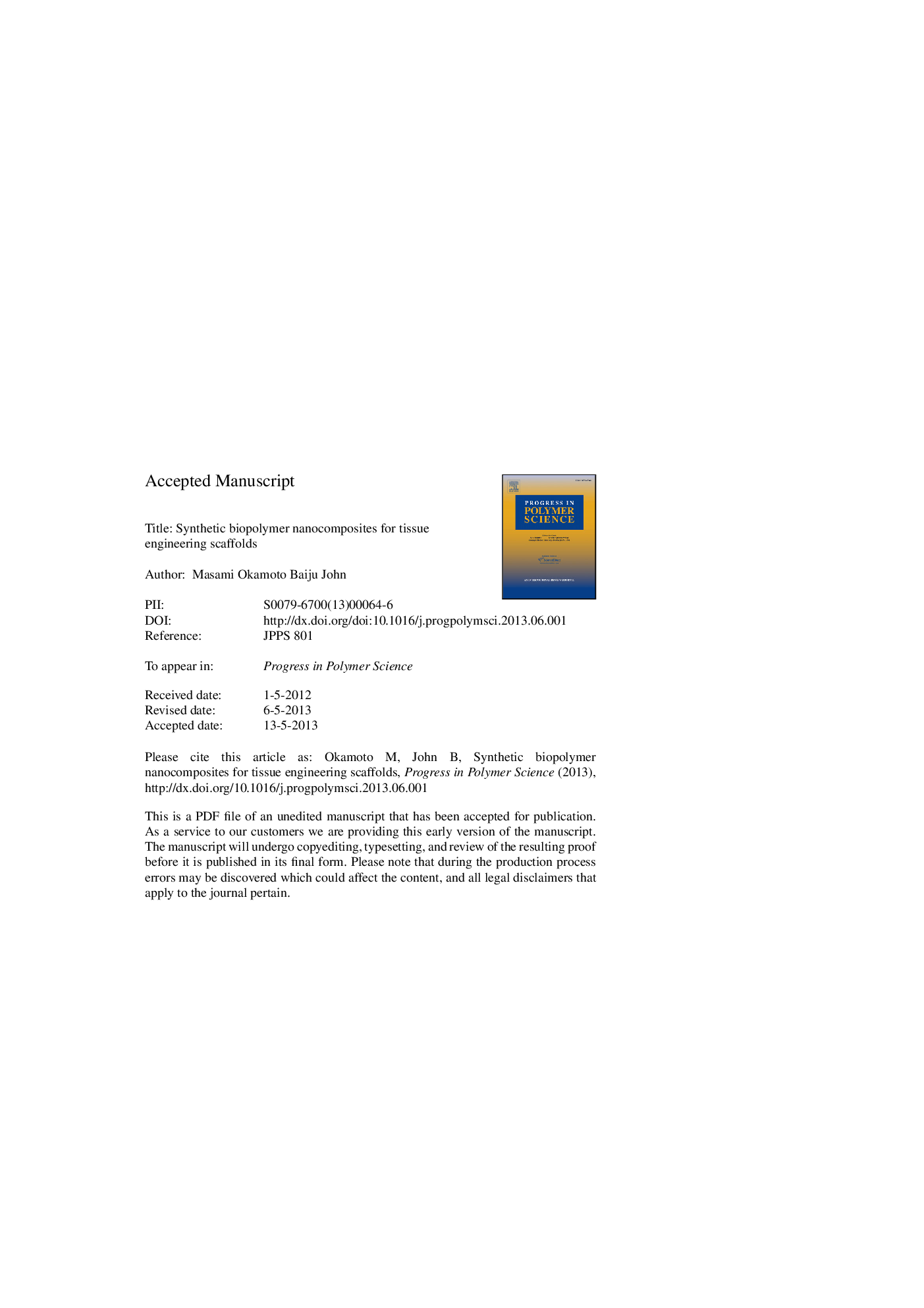| Article ID | Journal | Published Year | Pages | File Type |
|---|---|---|---|---|
| 5208246 | Progress in Polymer Science | 2013 | 55 Pages |
Abstract
With tissue engineering we can create biological substitutes to repair or replace failing organs or tissues. Synthetic biopolymer-based nanocomposites are of interest for use in tissue engineering scaffolds due to their biocompatibility and adjustable biodegradation kinetics. The most often utilized synthetic biopolymers for three dimensional scaffolds in tissue engineering are saturated poly(α-hydroxy esters), including poly(lactic acid) (PLA), poly(glycolic acid) (PGA), poly(lactic acid-co-glycolic acid) (PLGA), and poly(É-caprolactone) (PCL). To enhance the mechanical properties and cellular adhesion and proliferation, the incorporation of nanoparticles (e.g., apatite component, carbon nanostructures and metal nanoparticles) has been extensively investigated. At the same time, current research is focused on the interaction between stromal cells and biopolymer interfaces. In this review, current research trends in nanocomposite materials for tissue engineering, including strategies for fabrication of nanocomposite scaffolds with highly porous and interconnected pores are presented. The results of the in vitro cell culture analysis of the cell-scaffold interaction using the colonization of mesenchymal stem cells (MSCs) and degradation of the scaffolds in vitro are also discussed.
Keywords
RGDCNTPDLLASWNTPPFPHBBMNCPLAeGFPHEKECMHRPSBFMSCPLLAMHACNFhMSCBMSCArg-Gly-AspPVAMWNTPLGAPCLhuman epidermal keratinocyteFDAPGAMulti-walled nanotubenTiO2PBSnHAUS Food and Drug AdministrationThermally induced phase separationScaffoldsCarbon dioxideBiopolymerWorld Health Organizationembryonic stemBone marrow stromal cellBone marrow mononuclear cellMesenchymal stem cellhuman mesenchymal stem cellthree dimensionalExtracellular matrixSimulated body fluidSEMTissue engineeringscanning electron microscopeNanodiamondNanoparticlesTiO2 nanoparticlesCarbon nanofiberCarbon nanotubeSingle-walled carbon nanotubeNanocompositesSilverTIPSHydroxyapatiteHorseradish peroxidaseenhanced green fluorescent proteinPoly(L-lactic acid)Poly(ɛ-caprolactone)Poly(lactic acid-co-glycolic acid)poly(glycolic acid)Poly(butylene succinate)Poly(lactic acid)Poly(propylene fumarate)polyvinyl alcoholCO2WHO
Related Topics
Physical Sciences and Engineering
Chemistry
Organic Chemistry
Authors
Masami Okamoto, Baiju John,
